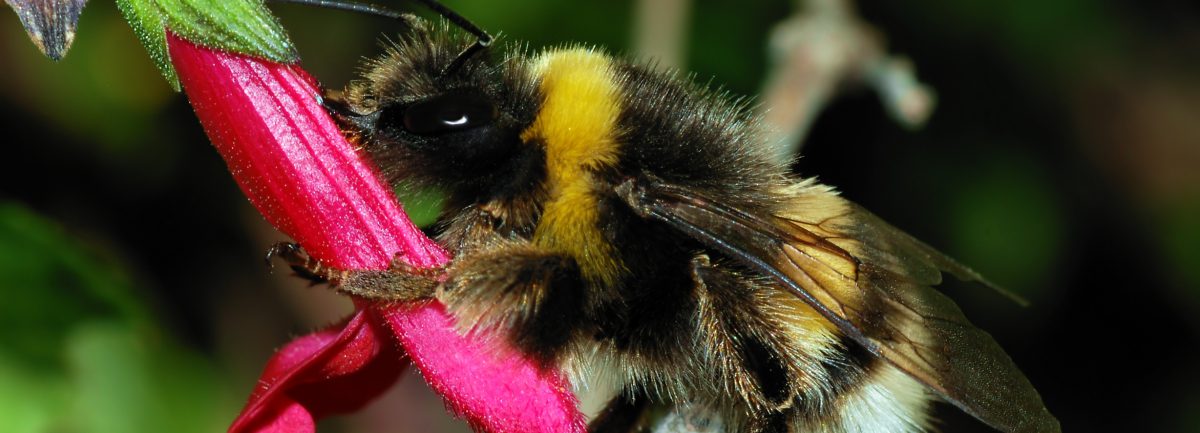
Do you have a Swarm of Bees?
A swarm of bees should not be approached by people with no experience with bees in the interests of health and safety.
A swarm can be a very dramatic and alarming sight as there may be hundreds of bees swirling around. They will eventually settle into a cluster if not too disturbed. Do not be tempted to hush them away as they could then follow you..in which case you may be in serious trouble.
Encourage people to keep away from the area where the bees are swarming and contact us. If the bees chase you…RUN
Bees can swarm on Lamp Posts, Fire Hydrants, Benches, Buildings, Chimneys, Trees or any static object and in the most awkward of places. The size of the swarm can vary.
Bees in swarm mode are not prone to stinging but it can happen.
Do not kill them as bees are hugely vital to the planet and in helping to keep us all fed because of their role as pollinators.
Removal of swarms is a voluntary service offered by some of our members. In requesting a swarm removal you are agreeing that EWBA as an Association is in no way responsible for any damage incurred in removals. We do not take swarms from roofs or other unsafe locations. Expenses involved for the hire of equipment etc. to do a swarm removal will have to be borne by the person requesting the removal.
A donation to the Association for the removal of a swarm would be appreciated
We only remove honey bee swarms. We do not remove wasps or other bee species so before contacting us check the following:
Is it a Honey Bee, a Solitary Bee or a Wasp?

There are over 98 species of bees in Ireland. There are 97 wild bee species. These include 20 bumblebee species and 77 solitary bee species but there is only one European honey bee (apis mellifera mellifera).
Please see below to identify what type of bee you have and who to approach for help and
information.
Step 1: Identifying Honey Bees
If the insects are not honey bees, this part of the website shows you how to recognise other insects and gives some advice on what to do.
Bumblebees
Bumblebees are often confused with honeybees. However, they are rounder, larger and furrier and come with a variety of coloured stripes across the end of their tails. Are they in a bird box, under the decking, in the compost?
Bumblebees are important pollinators. Leave the nests alone if possible. They will die out at the end of summer and will cause no further problems. Bumblebees rarely sting or attack people or animals and should therefore not be disturbed. There are 20 different types of native bumblebee, all of which vary in size and colour.

Beekeepers are unable to assist in the removal of bumblebees.
Solitary bees
Are there lots of small bees popping in and out of the wall or very small holes in the ground. Do they have a “reddy/brown” bottom? Are they almost black?
These are solitary bees, of which there are 77 species recorded in Ireland and they pose no threat or harm to you, your family or pets. Solitary bees are important pollinators and should be left alone. Their numbers will decrease over the summer and their nests should be left alone.
 Beekeepers are unable to assist in the removal of solitary bees.
Beekeepers are unable to assist in the removal of solitary bees.
Wasps
Is it bright yellow with black stripes? Kilkenny Colours! Very smooth, mainly yellow with black stripes? Is it in the roof of your house? Going into a hole in the ground? Are they coming from a round nest in a tree? Is there a nest in the shed? Do they have a high pitched buzz? Are they after all things sweet? Then these are probably wasps.
 Beekeepers are unable to assist in the removal of solitary bees.
Beekeepers are unable to assist in the removal of solitary bees.
European Hornets
Are they very big with a loud buzz? Are they black and brown with a hint of orange? Living in the roof or shed? Do they have a very big curved tail? These are European Hornets and are valuable pollinators usually found in wooden areas.
 Beekeepers are unable to assist in the removal of hornets.
Beekeepers are unable to assist in the removal of hornets.
Asian Hornets
Are they dark brown or black with a velvety body? The queen is up to 30mm long and worker up to 25mm long (smaller than the European counterpart). Are the legs yellow at the ends (the European hornet has brown legs)? Do not disturb an active nest. If you suspect you have found an Asian Hornet please send a photo to waterfordbees@gmail.com
 Beekeepers are unable to assist in the removal of Asian Hornets.
Beekeepers are unable to assist in the removal of Asian Hornets.
Step 2: Still think they are Honey bees?
Honey bees are small and vary in colour from golden brown to almost black.
Does your swarm look like this? If so contact any of the registered beekeepers listed below.
Contact any of the following registered beekeepers if you are concerned about a swarm:
Andy Crowley 087 2902011 areas for collection – Ballygunner, Butlerstown, Tramore
James Maher 087 2695485 areas for collection – Kilmacthomas area
Liam Neville 0872578617 areas for collection Dunmore East and Waterford City
Max Rautenstrauch 087 7739526 areas for collection – Dunmore East and surrounding areas
Michael Veale 086 3835886
Peter Finnegan 087 8128991 areas for collection – Kilmeaden and surrounding areas.
Philip Danels 087 4165156 areas for collection – Waterford..city west, Tramore
Seamus Kavanagh 086 1894896 areas for collection- Butlerstown and surrounding areas
Sean McHugh 089 2095304 areas for collection – Waterford City, Dunmore East, Tramore
Facebook:: Swarms.ie Responders Group

